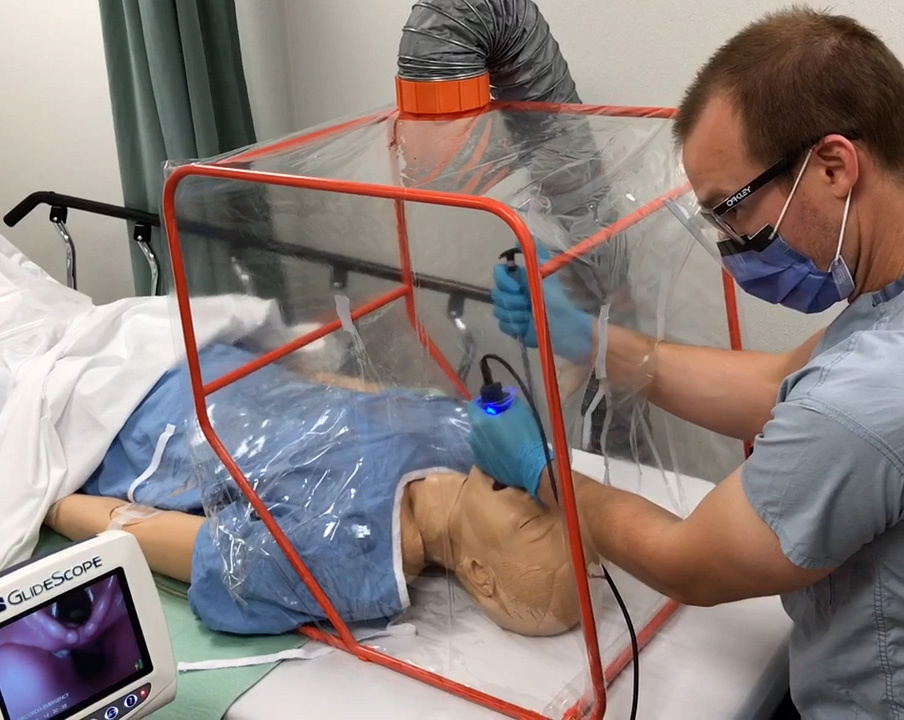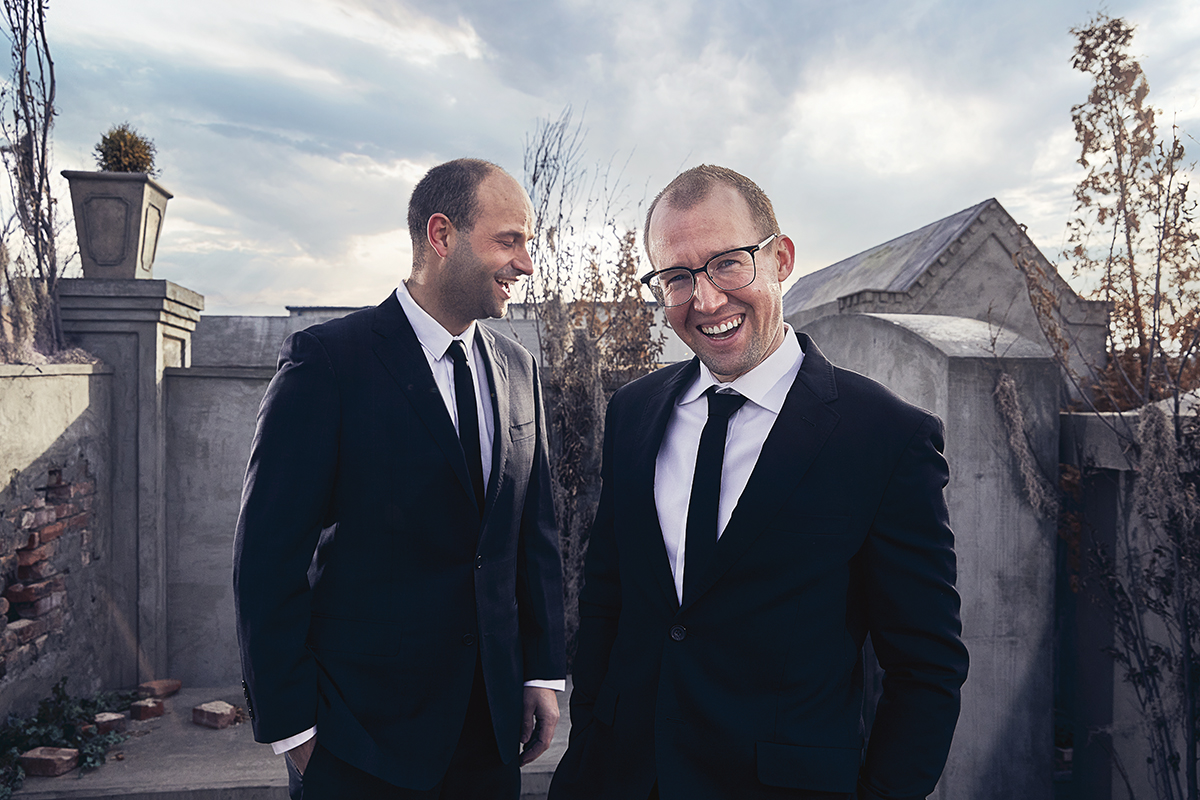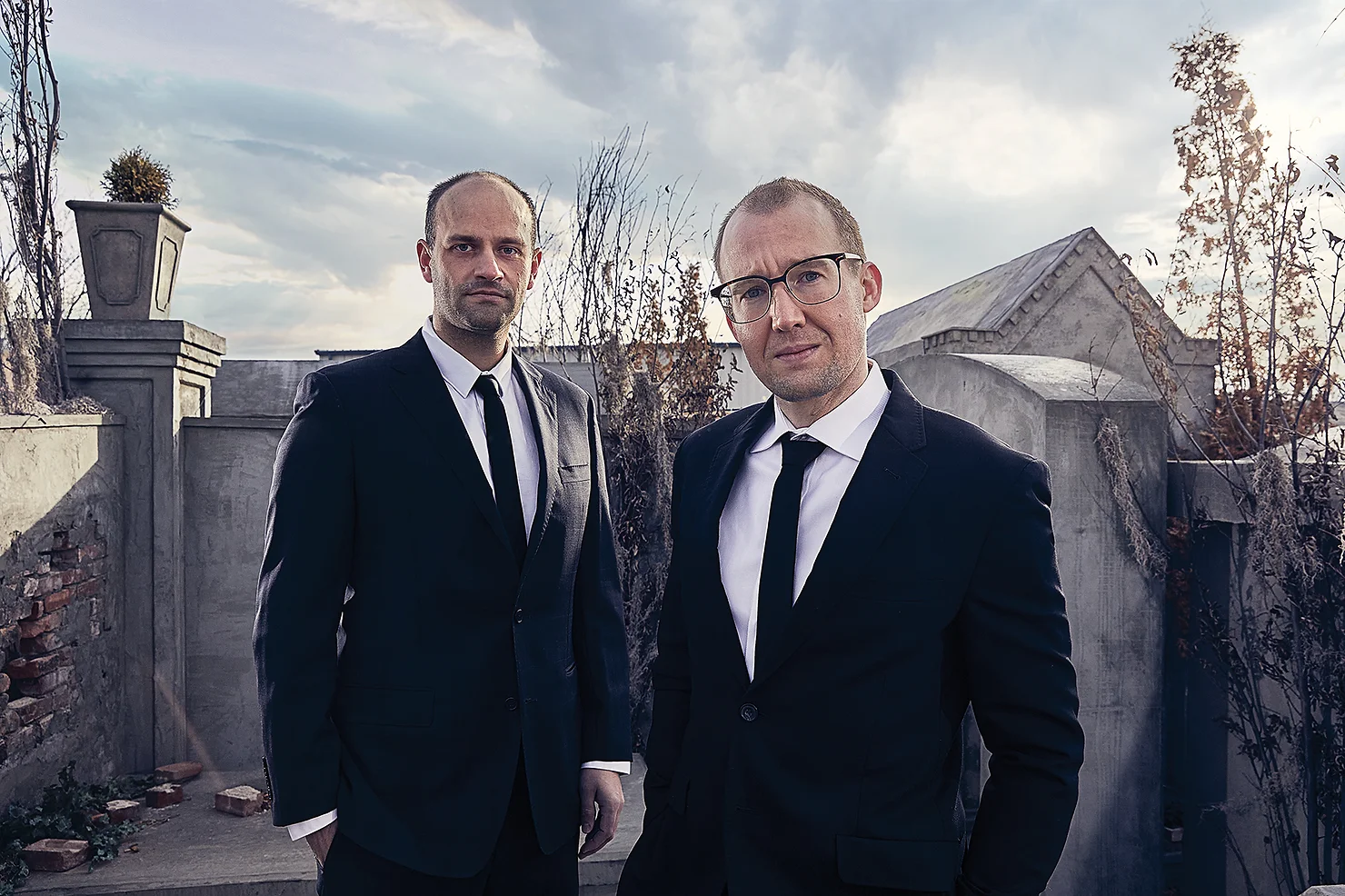An Edmonton company pitches a tent to prevent the spread.
BY ELIZA BARLOW | MAY 4, 2021
Photography Colin Way
In the anxiety-filled early days of the COVID-19 pandemic, Dr. Marc Curial had a “close call” in the emergency room at the Misericordia, while intubating a patient who was close to death from respiratory failure.
Stubble on the ER physician’s face meant his N-95 mask wasn’t fitting tightly. This was the first intubation he’d done since COVID-19 arrived in Canada, and the procedure generates aerosols — a fine spray of water droplets known to contain and transmit the virus.
“I had an air leak the entire procedure and I’m thinking, ‘What am I bringing home to my kids and my wife tonight — am I inhaling COVID this entire time?’” says Curial. “At dinner that night, the conversation was around, if I test positive, where am I sleeping? Am I going to a hotel? What do we do for the kids? It was worst-case scenario planning.”
It turned out the patient had pneumonia, not COVID-19, so Curial got a reprieve, albeit a temporary one. The 35-year-old works full time in the Misericordia hospital emergency room. He’s had over a half-dozen COVID tests since the pandemic began.

A miniature tent makes 30 air changes per minute. The experience inspired him to create a new medical device: An aerosol containment tent that offers doctors and nurses an extra layer of protection against infection from aerosols. Curial has dubbed it the “virus vacuum.”
It’s a portable tent that creates negative pressure around a patient’s head and
neck during high-risk procedures like intubations, preventing aerosols from escaping into the air around the patient.
As the pandemic worsened, Curial says, hospitals received guidance that any aerosol-generating procedure should be done under negative pressure.
The Misericordia has two negative-pressure rooms, but the logistics of moving patients in and out of them can limit their use, and they’re always occupied, he says.
“My thought was, can we miniaturize that technology around a patient’s head and neck and prevent that exposure from ever happening?” – Dr. Marc Curial

“My thought was, can we miniaturize that technology around a patient’s head and neck and prevent that exposure from ever happening?”
He took his idea to the team at MACH32 — the medical device company he co-founded with his long-time friend, Edmonton engineer Chris Terriff.
The company got its start developing an auto-mated injection device to deliver blood-clotting medicine directly into the bones of trauma patients.
The MACH32 team designed a frame made from powder-coated carbon-steel tubing with a PVC drape, ducting and a fan unit with a series of filters, including a HEPA filter. It has slits to allow doctors to reach in and perform procedures. It’s not meant to be sealed — negative pressure sucks air toward it, so air flows into the tent rather than out.
“The device works by moving more air than necessary, and we’ve over-engineered it to make sure it does what it’s supposed to even under the worst-use circumstances,” Curial says.
It generates enough negative pressure to make almost 30 air changes per minute, he adds. “Every two seconds everything inside the tent is completely turned over.”
The HEPA filter in the device, Curial says, is 99.97 per cent effective for the size of particles it’s targeting. An N95 mask is considered 95 per cent effective against the same-size particles, hence its name. Still, the tent is meant to be used in addition to, not instead of, personal protective equipment.
The tent went from idea to prototype in about four months and is regulated by Health Canada as a Class I, or low-risk, medical device. The company has made sales to hospitals in Ontario and has interest from other provinces and as far away as the Middle East. It’s also pending authorization from the U.S. Food and Drug Administration, Curial says.
The device was recently approved for use in Alberta hospitals.
Thinking back to that day in the ER, as the country was just beginning its battle with COVID-19, he considers how the aerosol containment tent could have helped his mental state.
“It would have alleviated four days of anxiety for me right there,” he says. “At this point in time, the mood around the emergency room at the hospital I work at is so low, and staff burnout is so high, I think any little bit of support and help is imperative.
“There’s a lot of things that can be done, but any level of extra protection will go a long way.”
SHOT ON LOCATION AT DEADMONTON HAUNTED HOUSE
This article appears in the May 2021 issue of Edify.

